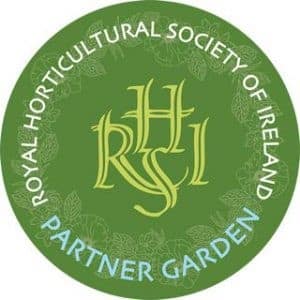Explore the Garden
Dating from the 18th century, the Walled Garden was originally created in the 1820s to provide the Castle household with all its fresh produce.
Over the past twenty years the Walled Garden has been carefully restored by Lord and Lady Antrim and it continues to evolve as a centre of horticultural excellence, with flowers that burst with colour from spring until autumn.
Explore its delightful herbaceous borders, soothing water features, and kitchen gardens. Enter through the doorway at the top of the Walled Garden and wander around the calming green woodland. From here, enjoy panoramic views across the garden and parkland.
We certainly haven’t stopped evolving the Walled Garden and hope you will return each season and discover something new.
We try to ensure that the garden is constantly evolving and that there is always something to see and enjoy, from the apple blossom and tulips in spring to the brightly coloured herbaceous borders in high summer.
Lady Antrim
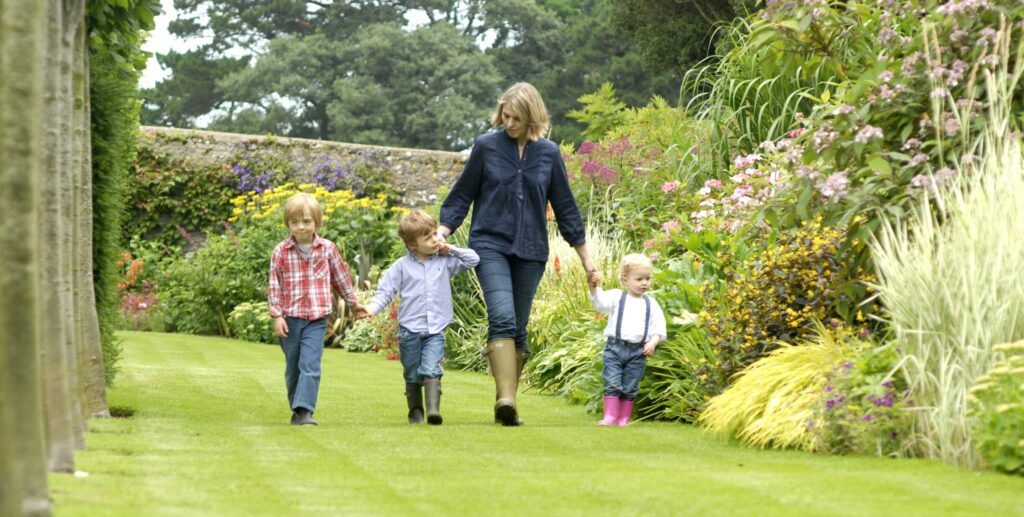
We try to ensure that the garden is constantly evolving and that there is always something to see and enjoy, from the apple blossom and tulips in spring to the brightly coloured herbaceous borders in high summer.
Lady Antrim
Audio Guides for the Walled Garden, narrated by Sean Rafferty of BBC Radio 3, are available for a small hire fee at the Welcome Centre. Hear the history of the Walled Garden from the 18th Century till the modern day.
*subject to availability*
Today the main garden features decorative herbaceous borders – each with their own distinctive colours and specimens. As you enter through the stone archway into the main area you will see a traditional, double herbaceous border with its delicate blues and pinks: including towering blue delphiniums, white polemoniums and pink phlox. To your left is ‘The Hot Border’ with its predominance of sunny yellows. fiery reds and oranges which develop throughout the summer season.
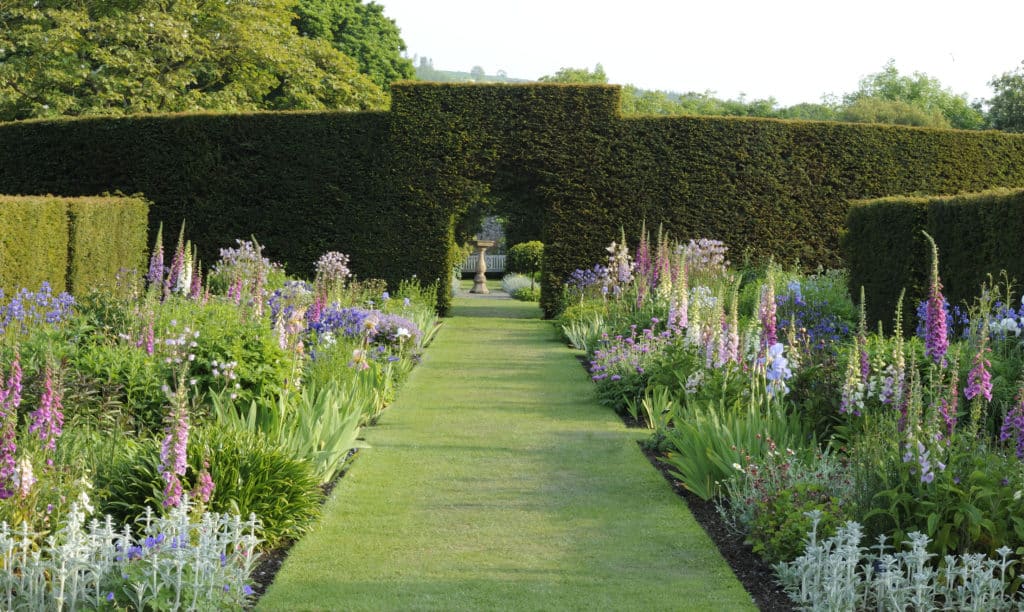
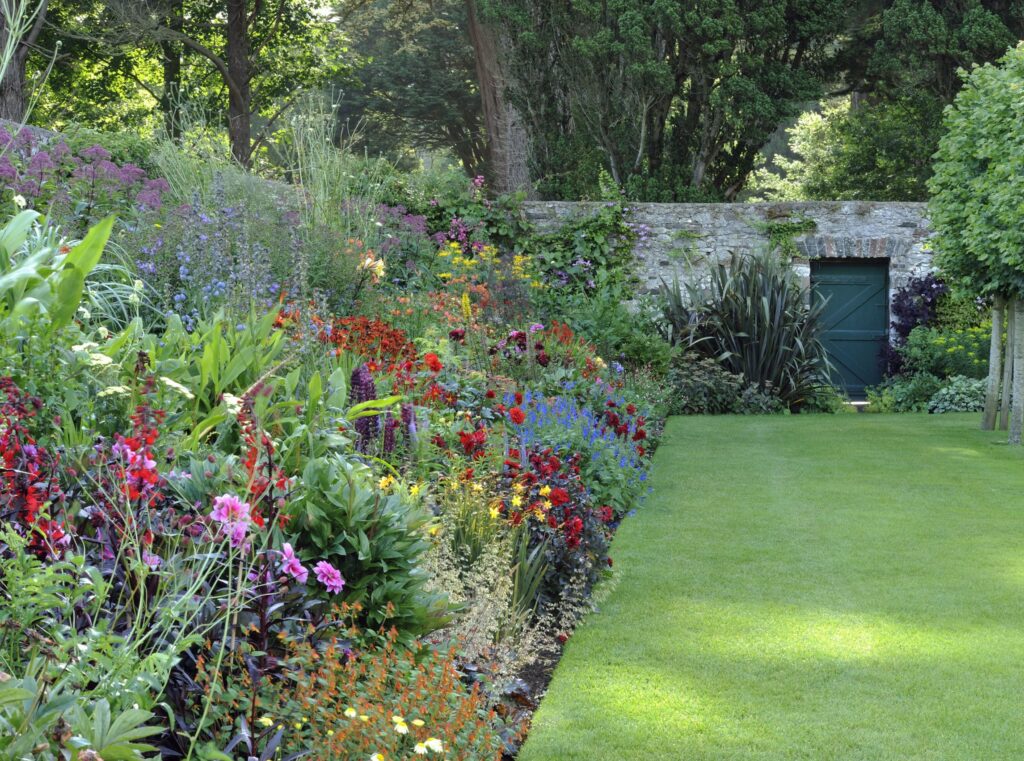
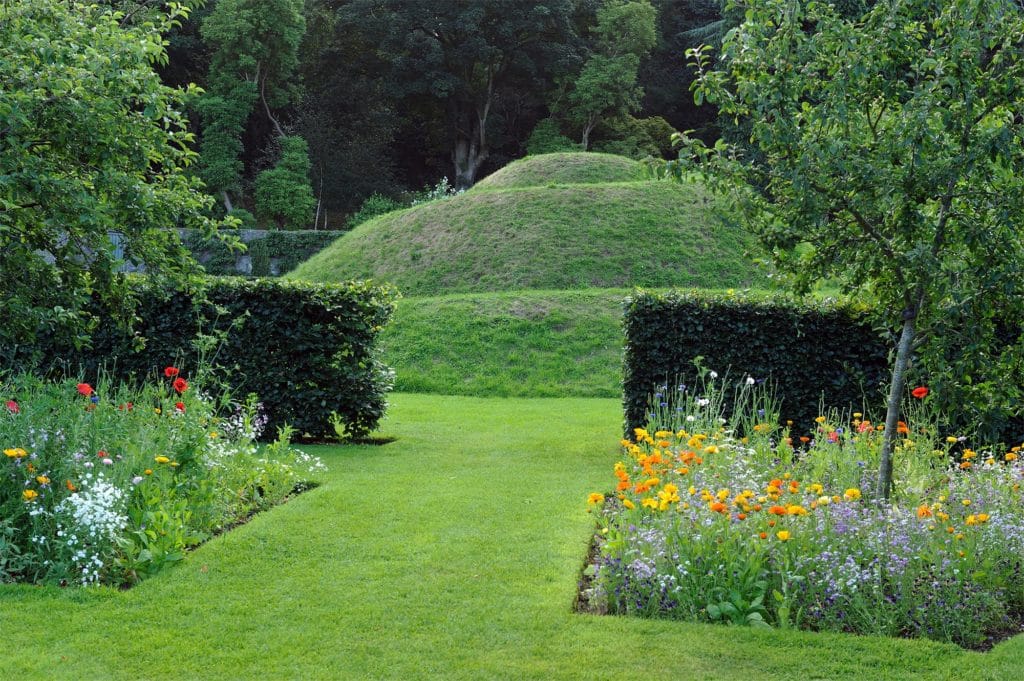
Gardeners have been creating mounts since at least the Middle Ages when grassy slopes provided vantage points and places of quiet contemplation within their walled enclosures. Our mount was created in 2007 and from the top you can enjoy fine views of the garden, the sea to the north and Glenarm Castle’s parkland to the south.
Angela, late Countess of Antrim and the current Earl’s grandmother, was a talented artist. The Castle is filled with her murals and sculptures. The statue of the Madonna and Child, that Angela carved when she was only 16 years old, was recently moved from its position outside the castle to the middle of the bottom border.
Since then, we have added new features to the garden each year including an Oak Obelisk in the apple orchard and a fluted Classical Column in the quince garden, sculpted by local craftsman Corin Giles.
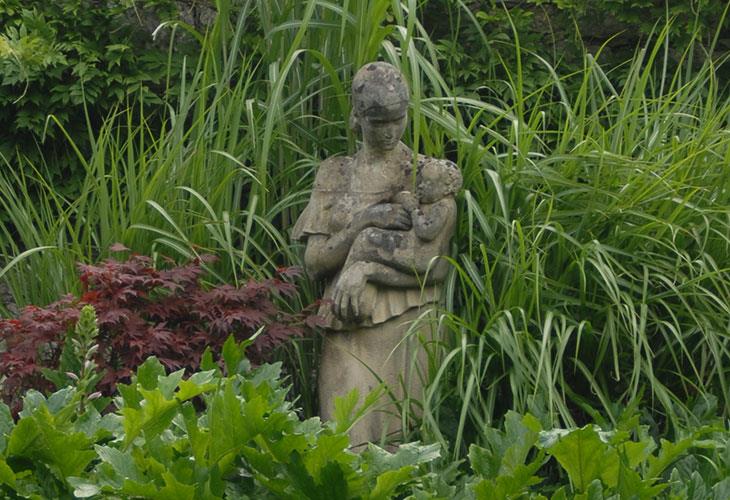
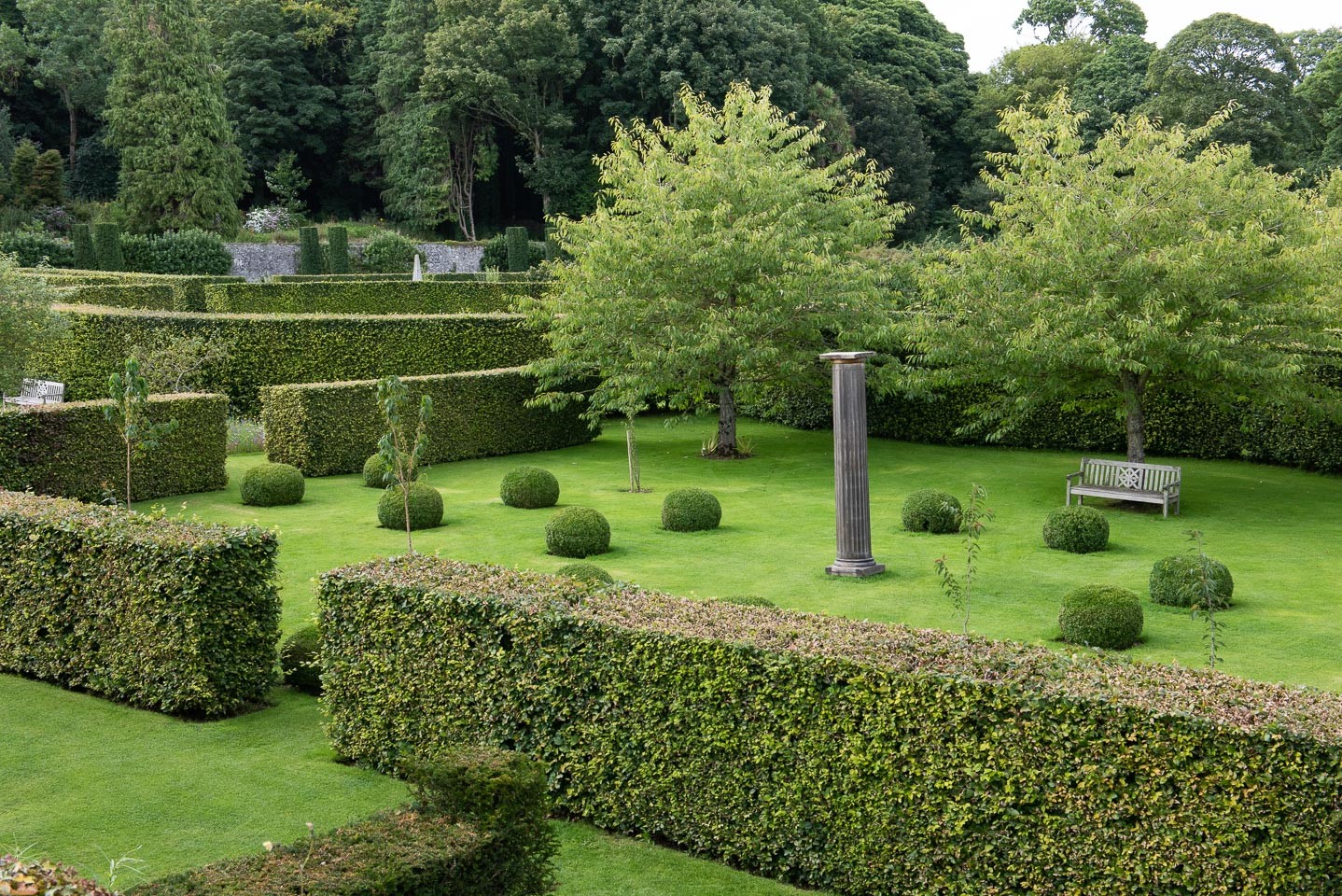
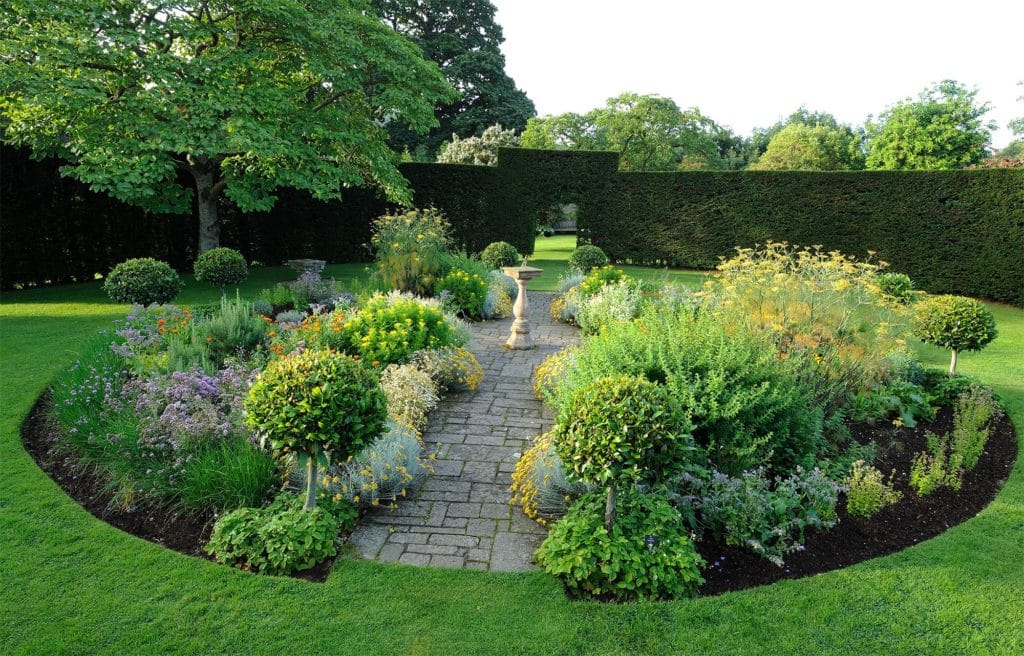
By the mid to late nineteenth century, once the Antrim Coast road had been built, it was much easier to obtain fresh fruit and vegetables via road, so more of the garden became devoted to ornamental planting. All that remains of the original garden today, apart from the walls and buildings, is the impressive yew circle, planted in 1830, which surrounds the herb garden.
The four capitals that sit in this wonderfully scented herb garden originally belonged to the Earl-Bishop and are thought to have come from his palace at Downhill in County Derry.
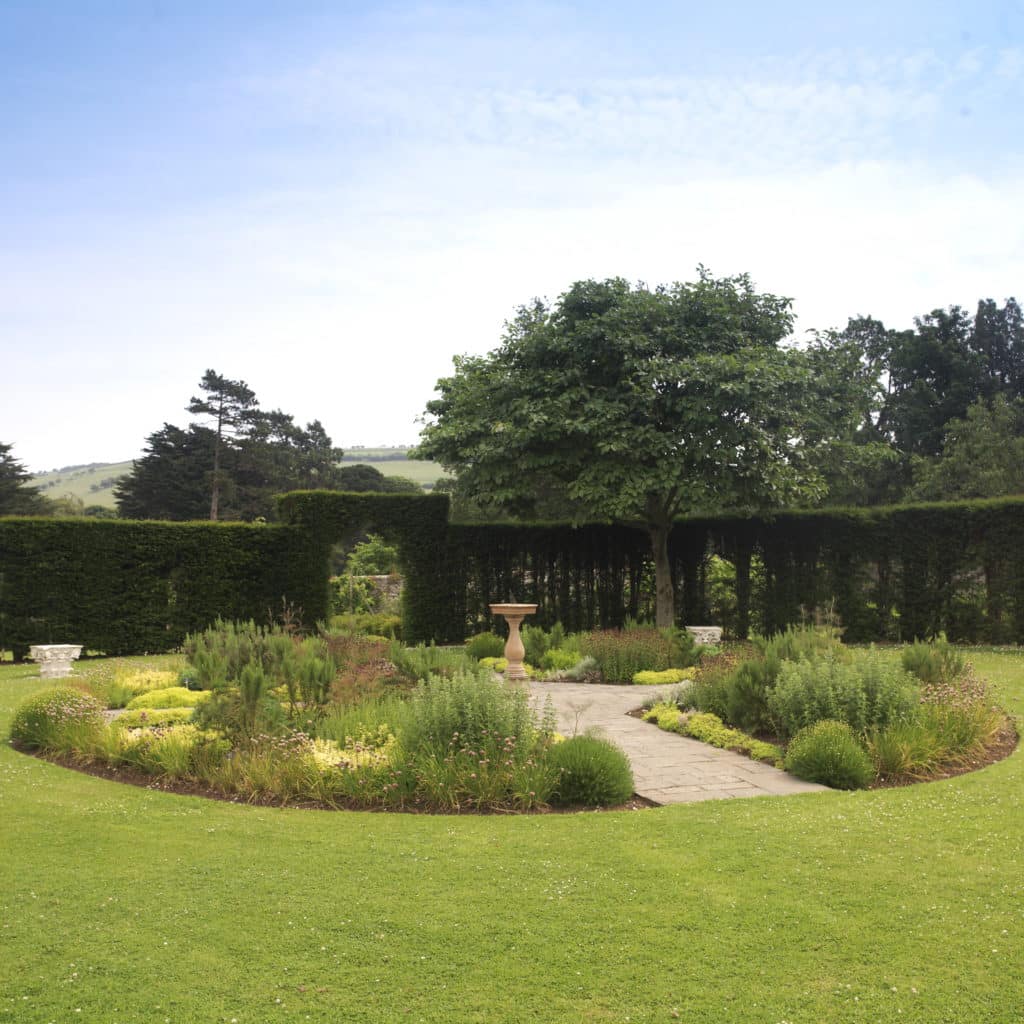
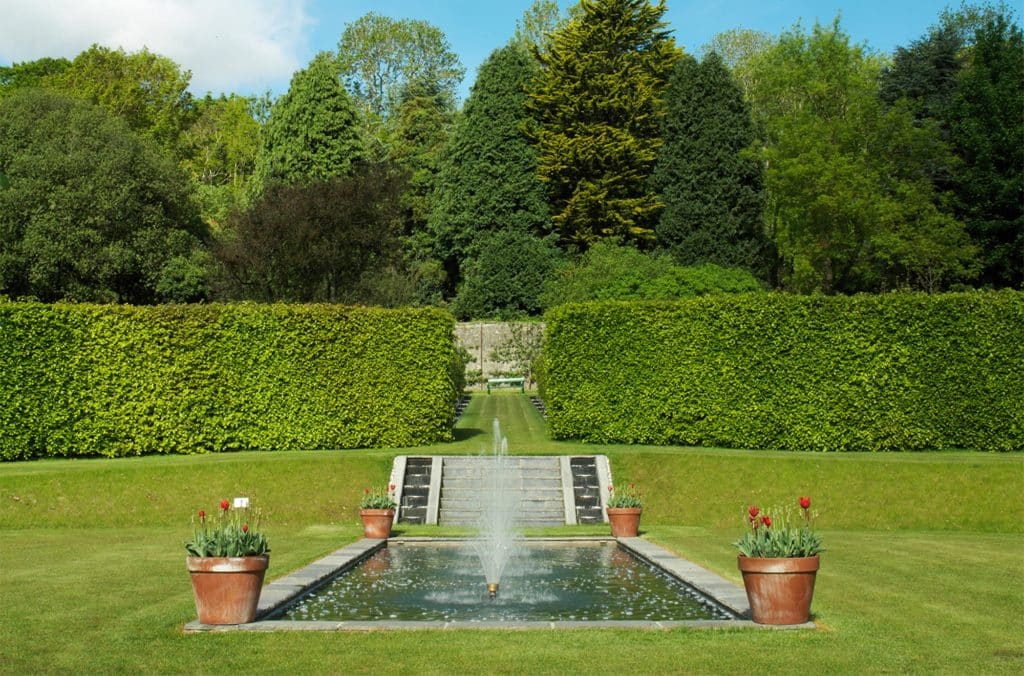
The pebbles used for the rills originally came from Glenarm beach.
While growing fruit and vegetables for the Castle household was once the main purpose of a Walled Garden, today only this section of the garden known as the ‘frame yard’ is used for growing vegetables.
At the top of the frame yard sits the house in which the Head Gardner would have lived and at the bottom is the old mushroom house (now the Tea Room) in which mushrooms would have been cultivated in dark, damp conditions.
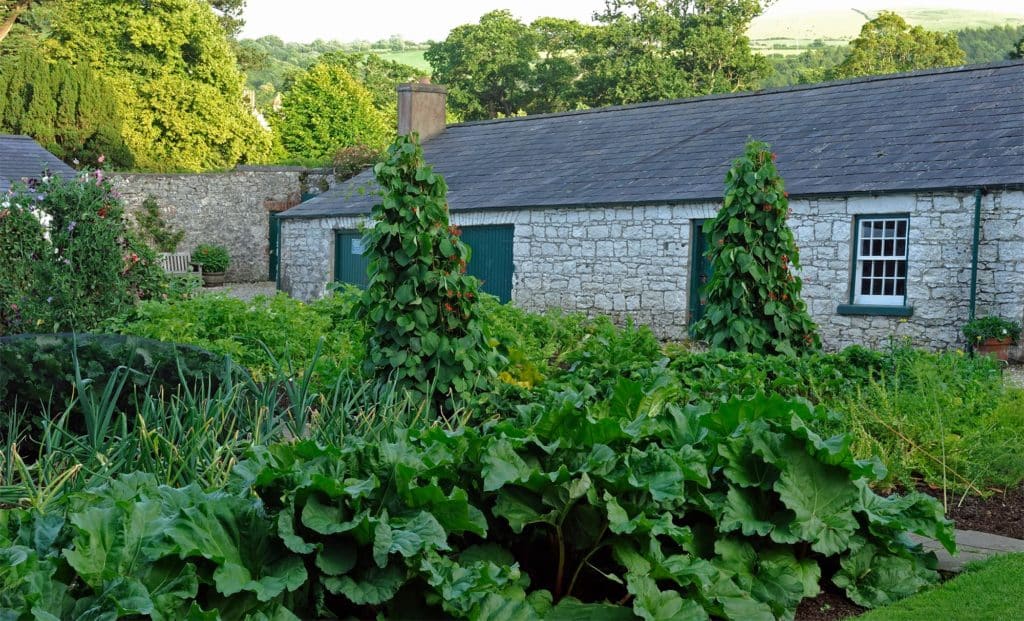
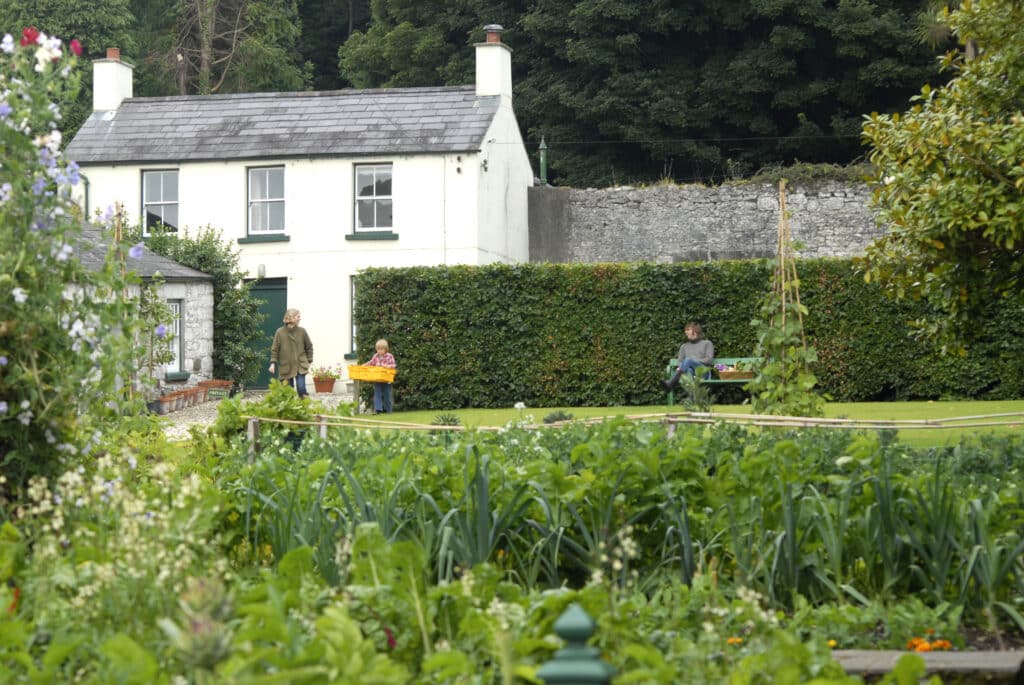
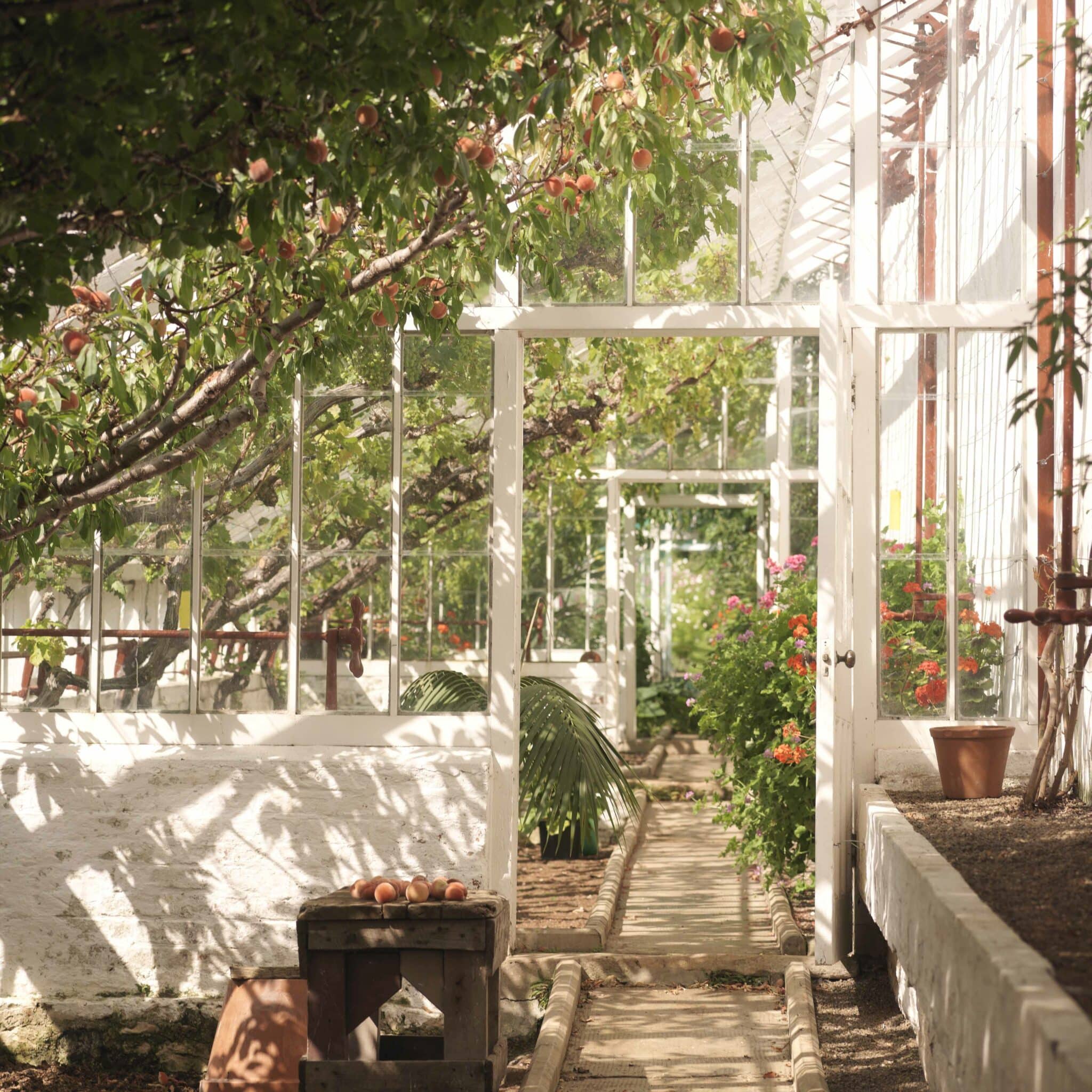
The glass house, in which soft delicate fruit including apricots, nectarines and grapes are grown, dates to the 1820s. It is also used to propagate plants for the garden and Castle Shop. The structure backs onto the whitewashed bothies in the kitchen garden. Many of these contain small fireplaces and were once used to house journeymen and garden staff.
The picturesque, espaliered Discovery apple trees line the top wall of the garden. They are beautiful with blossom in the spring and decorative in late summer and early autumn as the fruit ripens into a deep red colour.


The Walled Garden is home to seven hedgehogs from Loughgall Hedgehog Rescue – Jack, Trevor, Thelma, Scratchy, Maud, Rick and Nettie.
All the rescues have suffered severe trauma or illness and need the protection of the Walled Garden to survive. We are delighted to be highlighting their cause as Hedgehog numbers have fallen dramatically over the last 30 years due to pesticide use, habitat loss and the use of machinery, particularly grass strimmers.
While they tend to be most active at night, visitors to the Walled Garden might be lucky and see one of them scuttling around during the day.


